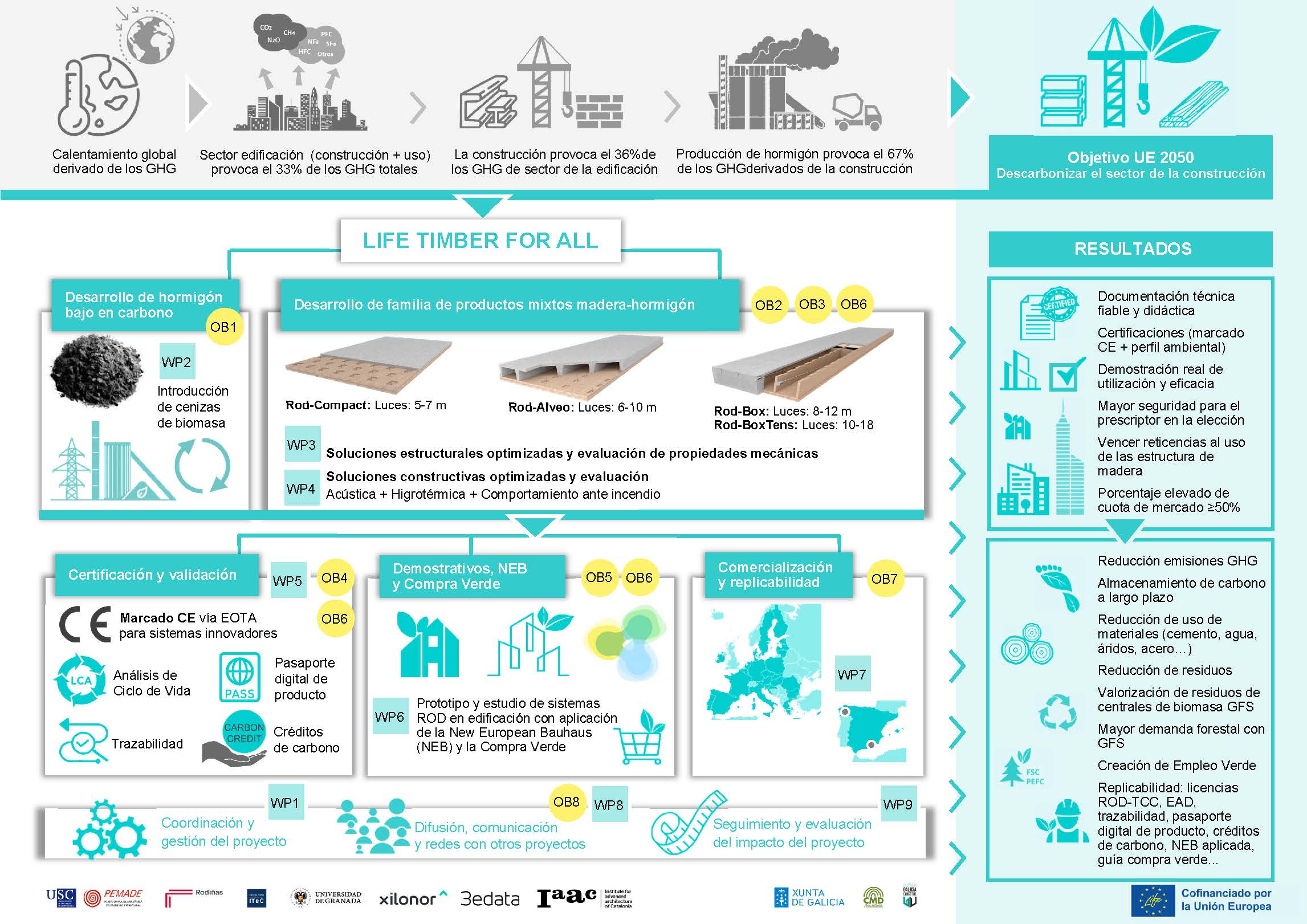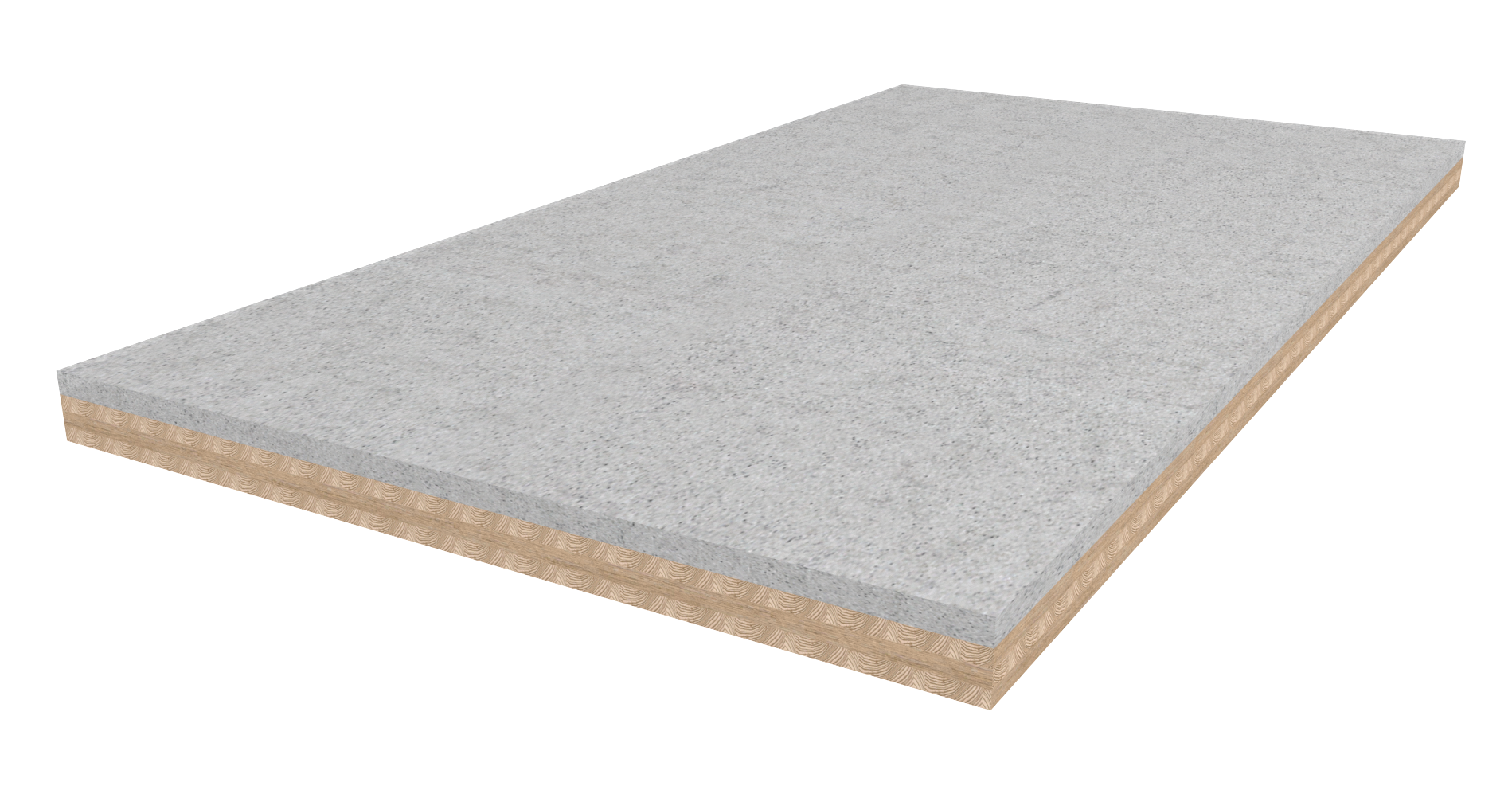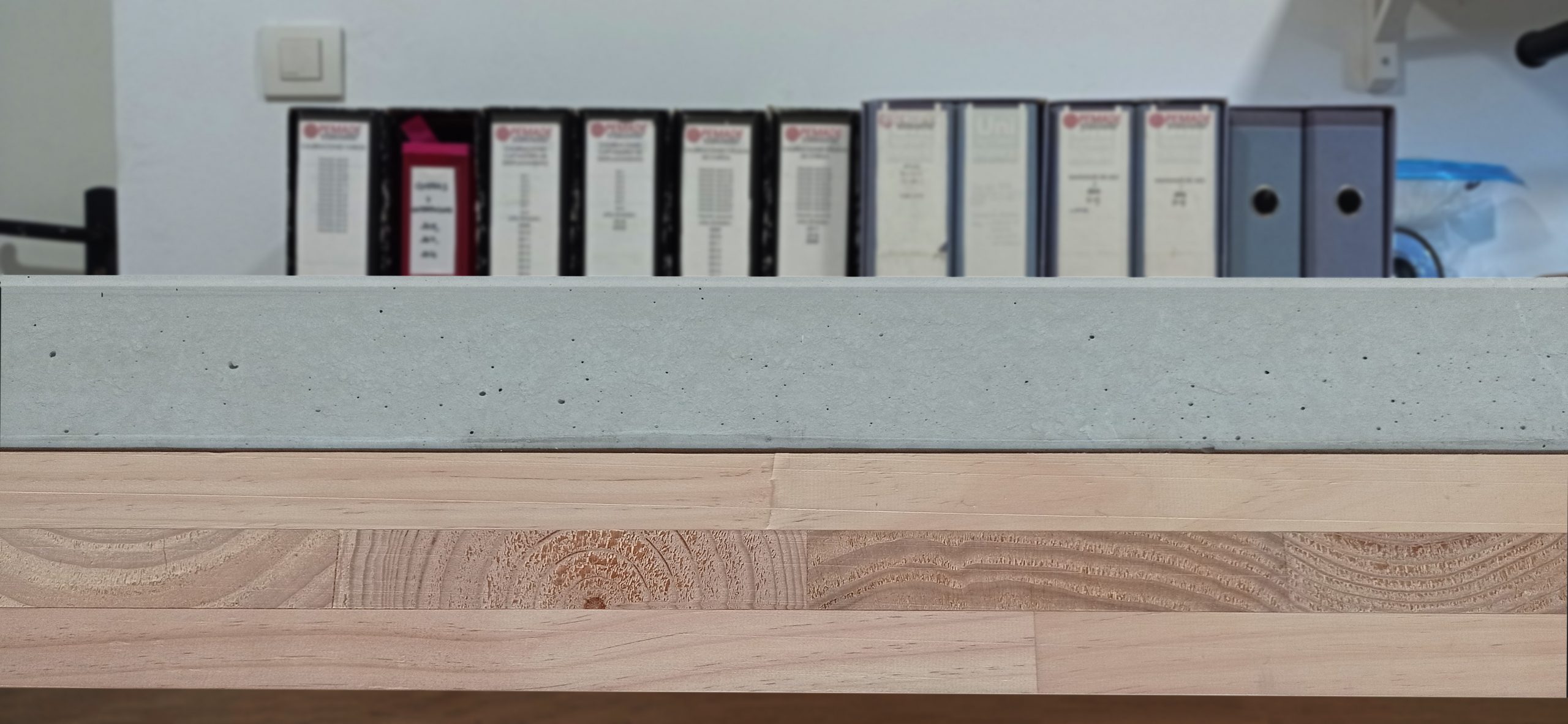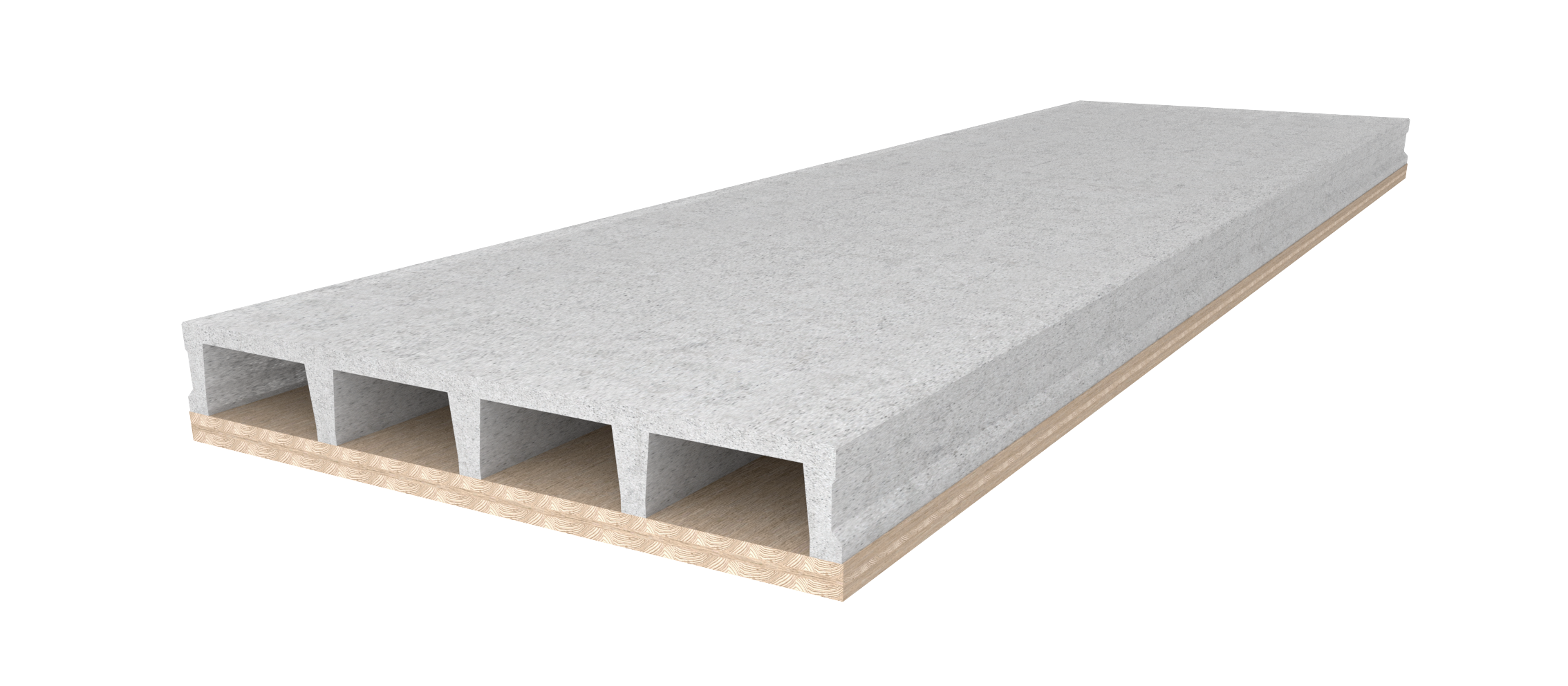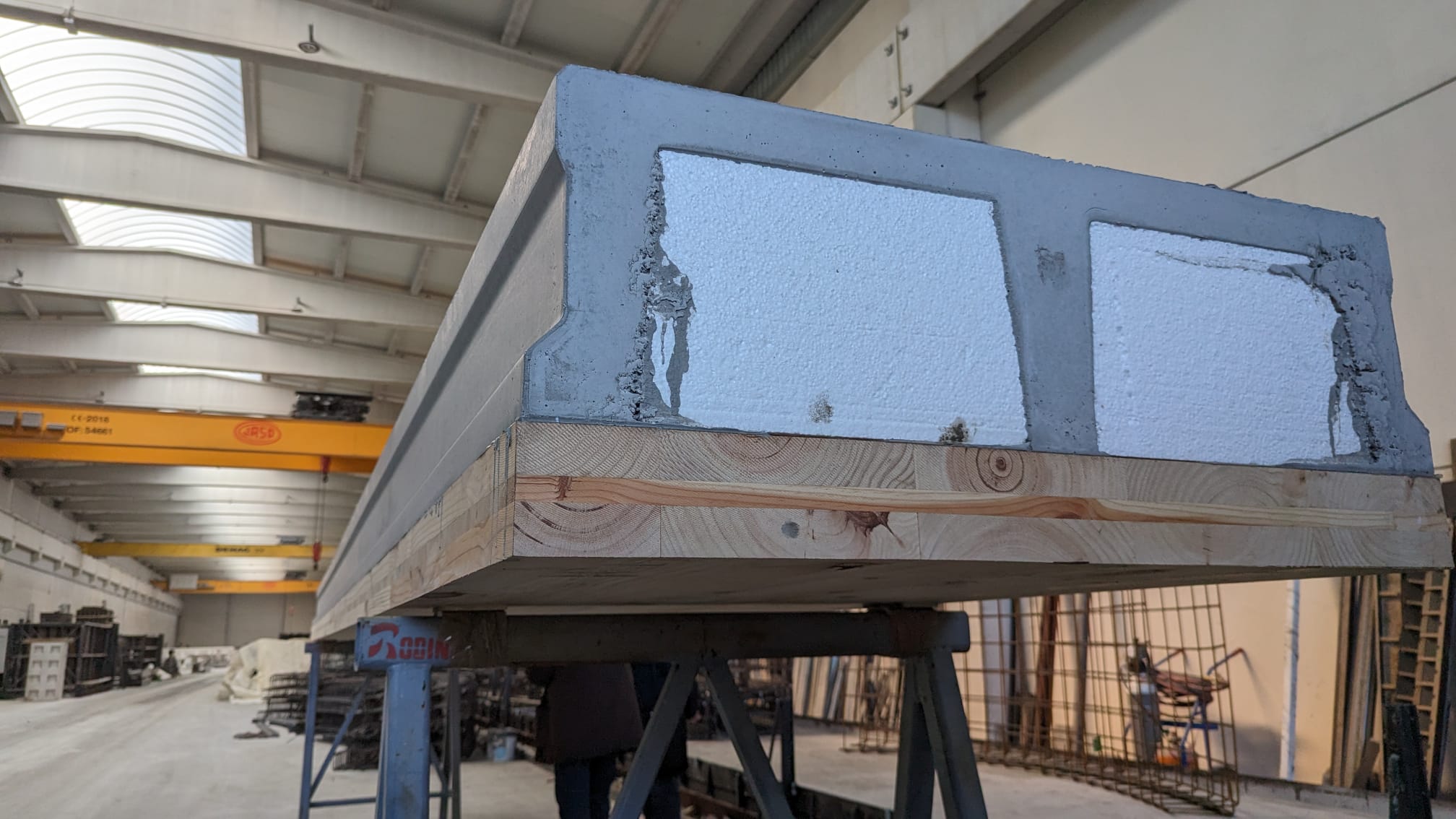DETALLES DEL PROYECTO
FECHA: 2025-2029
CATEGORÍA: Life
LIFE TIMBER FOR ALL. Decarbonisation of concrete structures through carbon storage in mixed timber-concrete structural systems for sustainable industrialised architecture in the New European Bauhaus
Building accounts for one third of global GHG emissions. This fact reveals the urgent need to decarbonise the construction sector, where concrete is historically the dominant material due to its good properties, but which accounts for 8% of the planet\\\\\\\\\\\\\\\'s global emissions. Faced with this situation, the role of timber is in construction is increasing. Yet, despite recent progress and the impulse given by EU policies to this material, there are still many barriers to its extensive use.
LIFE TIMBER FOR ALL aims for all buildings to incorporate sustainable and industrialised timber, to reach a point of equilibrium between concrete and wood, harmonising both materials, storing carbon in the long term while reducing the total amount of concrete and steel (and associated GHG emissions). Through hybridisation, the aim is to enable optimal solutions for all types of constructions, especially those where wood alone is currently infeasible, and to reduce costs compared to wood-only solutions. Additionally, it is also proposed to decarbonise concrete with biomass ash.
To address this challenge, a family of Timber-Concrete-Composite structural systems (the ROD-TCC) will be developed, together with a series of measures to overcome barriers to and boost timber construction, namely: certification of the systems’ performance and the carbon stored; a digital product passport to bring transparency to and provide proof of the local origin of the wood and its sustainable forest management; implementation of the New European Bauhaus principles such that beautiful and sustainable timber reaches all people and is inclusive of local communities; and of course the commercialisation and marketing of the products, along with efforts promoting replicability and dissemination to multiply the project impact.
The results of the project will be expressed in a demonstration building integrating ROD-TCC and the NEB, the first of many necessary to achieve sustainable industrialised construction for all.
LIFE TIMBER FOR ALL Objectives
• Produce low-carbon concrete for structural use through ash (waste) derived from energy production with certified sustainably managed forest logging residues. • Develop mixed timber-concrete structural systems (ROD-TCC) that generate durable bio-based products for long-term carbon sequestration, decarbonizing the concrete sector with a perspective of recyclability and industrialized construction. • Optimise the performance of the developed structural systems to overcome technical barriers in the adoption of wood as a structural element in construction. The ROD-TCC systems must meet regulatory and market demands in fire behavior, acoustic insulation, and hygrothermal performance. • Certify the structural systems for use and replicability in the EU, and provide tools that ensure material traceability, the local and sustainable origin of the wood, the calculation of the carbon footprint from cradle to cradle, and long-term carbon sequestration. • Contribute to the application of the New European Bauhaus (NEB) and Green Public Procurement of structural timber in both public and private construction. • Reach the market by overcoming economic and perception barriers to the adoption of wood for structural systems in construction. • Multiply the project\\\\\\\\\\\\\\\'s impact in the political, social, environmental, and economic spheres. • Reach the target audience and society by transmitting the project results and achieving effective dissemination of the project and the LIFE programme.LIFE TIMBER FOR ALL Actions
• Project management and coordination: Coordinates the technical, administrative, and financial aspects of the project, ensuring compliance with deadlines and objectives. • Development of Low-Carbon Concrete with ash from biomass combustion: Focuses on creating concrete with a low carbon footprint, incorporating biomass ash as a supplementary cementitious material and aggregate substitute, for structural use in ROD-TCC systems. • Development of a family of ROD-TCC Structural Systems for small, medium, and large spans: Develops four hybrid timber-concrete structural systems (Rod-Compact, Rod-Alveo, Rod-Box, and Rod-BoxTens) covering spans from 4 to 18 meters, optimizing their structural design and the recyclability of their connections. • Construction solutions optimized for acoustic, thermal, and fire performance: Evaluates and optimizes the performance of ROD-TCC systems in terms of acoustic insulation, hygrothermal behaviour, and fire resistance to overcome technical barriers. • Certifications and validation of structural systems: Manages the acquisition of European certifications (CE Marking, EAD, ETA, EPD) for Rod-Compact and Rod-Alveo, implements a Digital Product Passport (DPP), and develops a methodology for generating carbon credits. • Implementation of sustainable wood construction through the New European Bauhaus and Green Procurement. Demonstrative Building: Adapts and implements an NEB methodology for wood construction in Spain, integrating green procurement strategies, and applies these principles to the ROD-TCC systems and a demonstration building. • Sustainability, replicability, and exploitation of project results: Develops and implements business and replicability strategies, including the After-LIFE plan and the replication of the Rod-Compact system in Andalusia (IB-Compact). • Dissemination, communication, and networking with other projects: Promotes the project and its results through communication, awareness, and networking activities with other initiatives, seeking to expand its reach and impact. • Monitoring and evaluation of project impact: Quantifies and evaluates the environmental, social, and economic impact and contribution of the project.Expected results
• Development of a family of 4 mixed timber-concrete structural systems (ROD-TCC) and 1 replicated system in Andalusia: IB-Compact. • Creation of a low-carbon concrete (with biomass ash) for structural use. • Publication of the EAD (European Assessment Document) for TCC timber-concrete composite systems, and obtaining the CE Marking and EPD (Environmental Product Declaration) for two products: Rod-Compact and Rod-Alveo. • Implementation of a Digital Product Passport (DPP) for ROD-TCC systems, integrating a wood traceability system. • Generation of a Carbon Methodology in Construction and Building, integrated into the voluntary carbon credit system of the Government of Galicia. • Development of an NEB methodology applicable to product and building design. • Creation of a guide and protocols for public and private green procurement for wood construction. • Construction of a LIFE TIMBER FOR ALL demonstration building.The project is part of the European Union\\\\\\\\\\\\\\\'s LIFE Programme for Climate Change Mitigation, with a total budget of 3.27 million euros, funded by the European Commission through the European Climate, Infrastructure and Environment Executive Agency (CINEA). Partners: Structural Timber Engineering Platform-University of Santiago de Compostela (PEMADE-USC), Rodiñas Group, Xilonor, 3edata, University of Granada, Institut de Tecnologia de la Construccion de Catalunya, Institut D Arquitectura Avancada de Catalunya, Clúster da Madeira e Deseño de Galicia, Fundación Galicia Constrúe (clúster da construcción), Axencia Galega da Industria Forestal (XERA).
Project reference: LIFE24-CCM-ES-LIFE-TIMBER-FOR-ALL/101213433
Project acronym: LIFE24-CCM-ES-LIFE TIMBER FOR ALL
Duration: 01/09/2025 to 30/09/2029
Total budget: 3,269,514 €
EU contribution: 1,961,708 €


